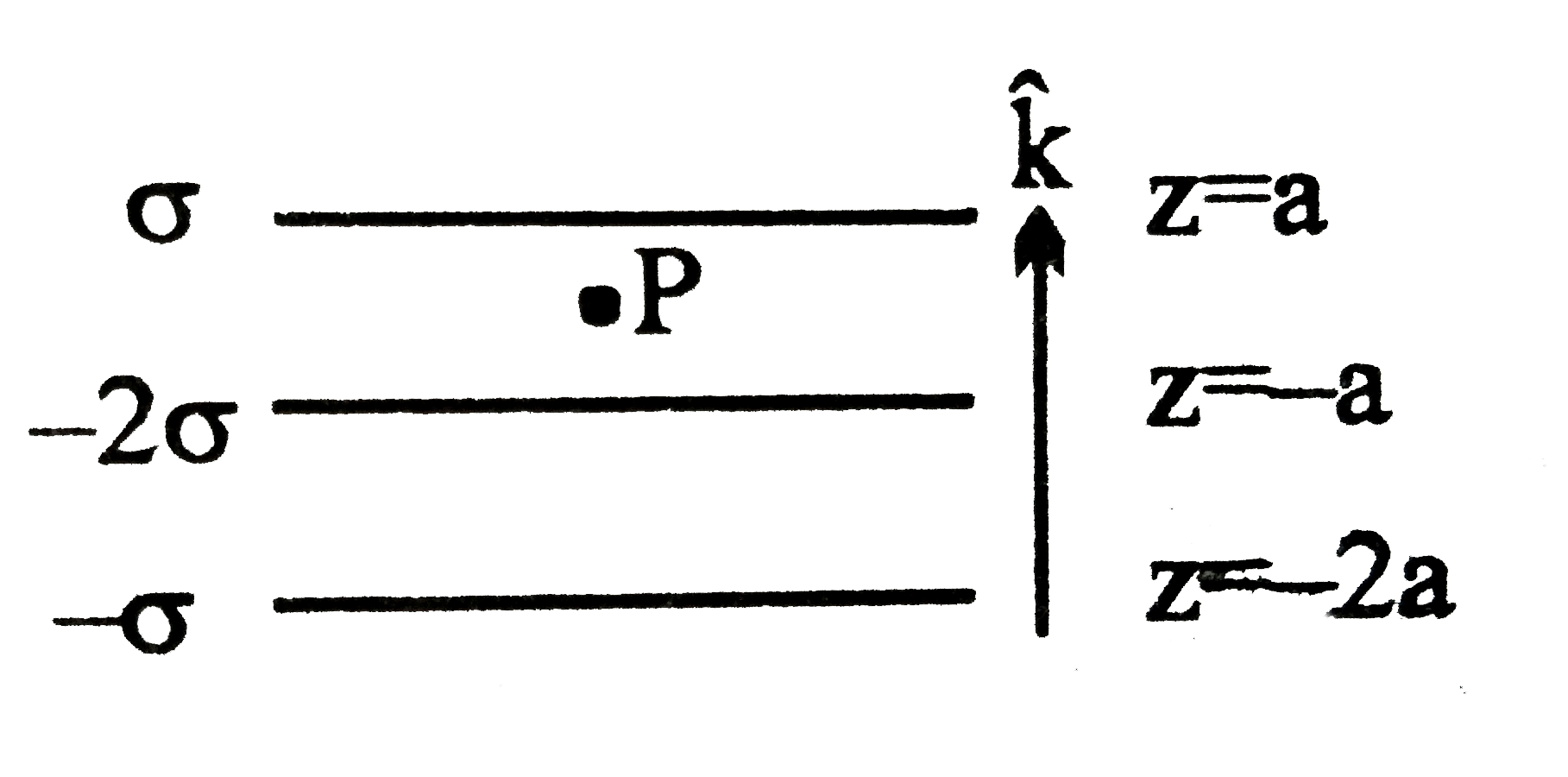Near an infinitely large flat plate with a surface charge density o on each side, the field strength is** E=δ∈nδ, while the field produced by a point charge at a distance r frorn the chargo is Prove that for a uniformly charged disk with a surface charge density a (on each side), the electric field strength on the axis of the disk is the same as for an infinitely large flat plate if the distances arc small in comparison with the disk's radius R, and is the same as for a point charge if the distances are large ** Usually the value of the field strength given in textbooks is half the one given here, since there it is assumed that the charge is on a geometric plane
Step by step video & image solution for Near an infinitely large flat plate with a surface charge density o on each side, the field strength is** E=delta/(in n^delta), while the field produced by a point charge at a distance r frorn the chargo is Prove that for a uniformly charged disk with a surface charge density a (on each side), the electric field strength on the axis of the disk is the same as for an infinitely large flat plate if the distances arc small in comparison with the disk's radius R, and is the same as for a point charge if the distances are large ** Usually the value of the field strength given in textbooks is half the one given here, since there it is assumed that the charge is on a geometric plane by Physics experts to help you in doubts & scoring excellent marks in Class 12 exams.
Updated on:21/07/2023Topper's Solved these Questions
Similar Questions
Knowledge Check
Two conducting spheres of radii r1 and r2 are charged to the same surface charge density . The ratio of electric field near their surface is
Ar21/r22Br22/r21Cr1/r2D1:1Three large parallel plates have unifrom surface charge densities as shown in the figure. What is the electric field at P
 .A−4σ∈0ˆkB−4σ∈0ˆkC−4σ∈0ˆkD−4σ∈0ˆk
.A−4σ∈0ˆkB−4σ∈0ˆkC−4σ∈0ˆkD−4σ∈0ˆkThe electric field intensity in free space at a distance 'r' outside a charged conducting sphere of radius 'R' in terms of surface charge density σ is
Aσε0[Rr]2Bε0σ[Rr]2CRr[σε0]2DRσ[rε0]2
Calculate electric field at a point on axis, which at a distance x from centre of uniformly charged disc having surface charge density σ and R which also contains a concentric hole of radius r.
View SolutionA uniformly charged disc of radius R having surface charge density σ is placed in the xy plane with its center at the origin. Find the electric field intensity along the z-axis at a distance Z from origin :
View SolutionElectric field at the centre of uniformly charge hemispherical shell of surface charge density σ is σnε0 then find the value of n.

View SolutionThe electric field due to a point charge at a distance R from it is E. If the same charge is placed on a metallic sphere of radius R, the electric field on the surface of the sphere will be nE, then the value of n is
View SolutionThe electric intensity at a point near a charged conductor of surface charge density σ is
View Solution